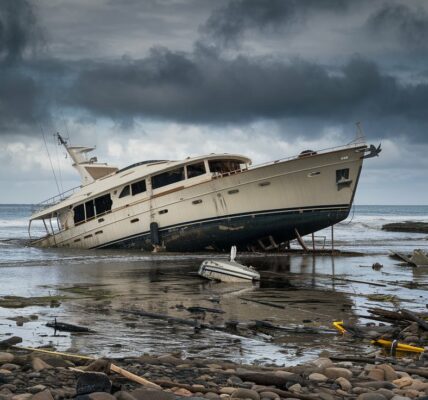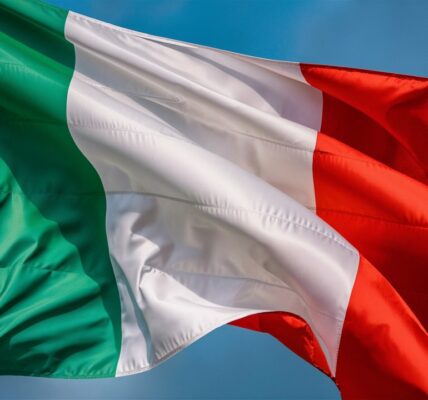In a world increasingly dominated by technology and modern conveniences, one Norwegian family has found an unexpected path to sustainability by embracing the simplicity of life as it was lived nearly two centuries ago. Nestled in the heart of Norway’s stunning fjord landscape, Reidunn Botnehagen’s family-run cabin, Haukali 333, offers a unique escape from the frenetic pace of modern life. The cabin not only provides a rustic retreat for holidaymakers, but also serves as a living lesson in environmentally conscious, sustainable living inspired by the mid-19th century.
A Journey Back in Time: The Concept Behind Haukali 333
Located on fertile land that has been in Botnehagen’s family for over a century, Haukali 333 is no ordinary holiday cabin. Modeled after a traditional husmannshus (smallholder’s cabin), it recreates the life of tenant farmers from the 1800s. These were people who worked long hours on land owned by wealthy landlords, eking out a modest existence while immersed in the rugged beauty of rural Norway.
This style of living, once seen as arduous and outdated, has in recent years become a symbol of nostalgia for a simpler, more sustainable way of life. As urbanization has drawn more Norwegians away from the countryside, many have become fascinated with reconnecting to their rural roots. Today, Norway boasts nearly 450,000 cabins, used year-round by those seeking an escape into nature. Yet, unlike the luxurious, modern retreats scattered across the country, Haukali 333 offers a more authentic and minimalist experience, intentionally free of modern conveniences.
Botnehagen explains that the goal of Haukali 333 is to give guests a taste of life in the 1850s—not as a novelty, but as a way to teach valuable lessons about how we live today. “No one is saying that life then was all good,” she said, “but nor was it all bad. We want to show it how it really was, as much as possible. We think the people who come will discover something as a result.”
Living the Slow Life: A Day at Haukali 333
A stay at Haukali 333 is like stepping into a time capsule. The cabin, with its turf roof, stone oven, and simple wood furnishings, evokes the rustic charm of a bygone era. There is no electricity for entertainment or modern cooking appliances, just the basic necessities that 19th-century Norwegians relied upon. The cabin is mostly candlelit, with a grue—a large open stone oven—providing both heat and a place to cook meals.
Guests are invited to fully embrace the 19th-century lifestyle, even donning traditional labourers’ garments if they wish. There’s an outdoor shower with cold spring water, a garden where visitors can pick their own fruit and vegetables, and a boat on the nearby lake to catch fish for dinner. The beds, built into the walls for warmth, are covered with wool from the family’s own sheep, and the only nighttime entertainment is a rokk or spinning wheel for making woolen clothes.
While such simplicity might seem challenging, many guests find joy in disconnecting from the modern world. Botnehagen recalls one family from London who spent an entire evening marveling at the brilliance of the stars, something they rarely saw due to light pollution back home. For another family, the chance to interact with the farm animals—especially the chickens, whom their children named—made for an unforgettable experience.
“There is five-star luxury and there is this different sort of luxury,” Botnehagen explained, “where you are appreciating simpler things like the closeness of nature without all these ways we have invented of synthesising it.”
A Timeless Connection to Nature: Norway’s Outdoor Tradition
Norway’s deep connection to nature is enshrined in the principle of Allemannsretten—Everyman’s Right—a law that grants everyone the freedom to roam, forage, and fish in wilderness areas. This legal right, which dates back to Viking times and was codified in 1957, is fundamental to the Norwegian way of life and reflects the country’s strong cultural bond with the natural world.
For Botnehagen, this connection is about more than just a nostalgic retreat—it is about relearning the lessons of the past to live more sustainably today. “Now, as then, the lake provides us with fish, the soil gives us fruit and vegetables, our sheep wool,” she said. “We have our own water supply. There is everything you need to survive. The difference is that today, having these things is considered privileged. Back then it was a basic right.”
Building a Greener Future by Learning from the Past
Haukali 333’s commitment to sustainability goes beyond its historical recreation. Botnehagen began the project in 2014 after inheriting her family’s farm, and she took great care to ensure that the reconstruction was as authentic as possible. She spent a year visiting historical sites and studying rural customs from the 19th century. The goal was to create not just a place to stay, but a living example of how people in the past made the most of limited resources.
What Botnehagen discovered was that life in the 1850s, while physically demanding, was more efficient in many ways than today’s consumer-driven society. For example, rural communities of the time practiced commodity-based trade, where items like chickens or cows were exchanged for other necessities. This form of barter reduced waste and kept consumption to a minimum, something that resonates strongly in a modern world where food wastage is a growing issue.
“There were less intermediaries: if you wanted something done you did it yourself,” she said. “Most of it could be done within sight of your house. A husmannshus would accommodate six, seven, eight residents. That is one lot of timber to fell for the cabin, one fire keeping everyone warm. Today, the same number of people might have four houses and run eight vehicles, but just because we can do things differently now doesn’t mean we should—not for the health of the planet anyway.”
Reflections on Modern Living
For Kari Sand, the regional business developer who helped Botnehagen bring Haukali 333 to life, the cabin is an opportunity for people to rethink their modern lifestyles. “Living in a farmhouse like Haukali 333 will give guests thoughts about the past and make the comparison: the differences in consumption, how much we use and throw away now, whether we need it all,” she said. “By living like this, it makes us think about how much electricity we use, and how many clothes—many of us have a cupboard full! Is this how we want to live?”
As the world grapples with environmental crises, the lessons from Norway’s past offer a powerful reminder that simpler, greener living is not only possible but deeply rewarding. At Haukali 333, guests learn that luxury doesn’t always come from modern conveniences. Instead, it can be found in the quiet beauty of nature, the warmth of a fire, and the satisfaction of living in harmony with the land. Norway’s simple answer to greener living, it seems, lies not in technological advances but in a return to the values of self-sufficiency, minimalism, and respect for the environment.





